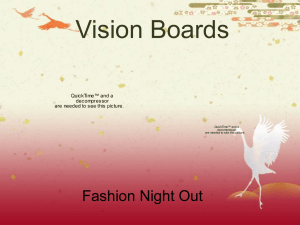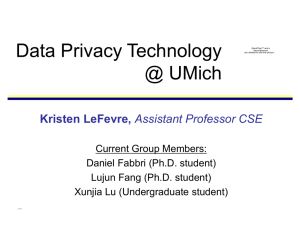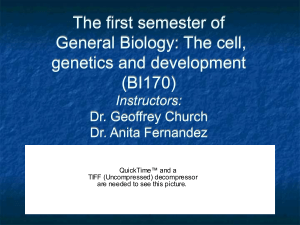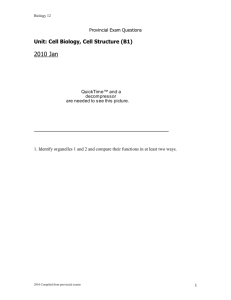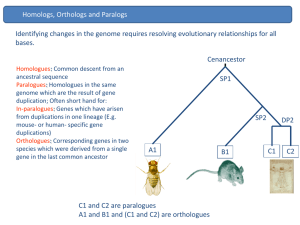Whole Brain Function
advertisement
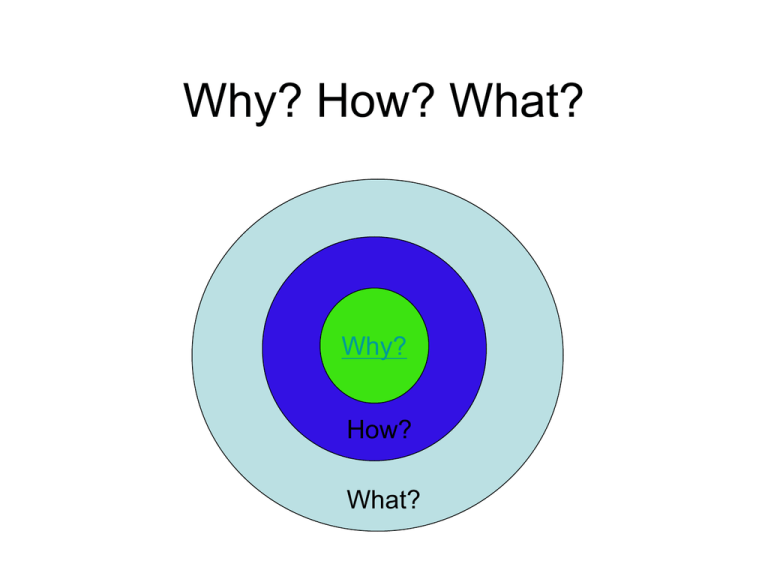
Why? How? What? Why? How? What? Answer These Questions • Why are you in college? Or, what do you want to get out of your college education? • Why are you in this course? Or, what do you want to learn or accomplish in this course? • What are the five most important concepts in evolutionary biology? Student Learning Goals Why students are in college. They want to be able to… Ability to communicate effectively Ability to solve problems Gain confidence Ability to apply knowledge Ability to use time effectively Increase opportunities Selection of responses from past evolutionary biology courses Student Learning Goals Why students are in college. They want to be able to… Ability to communicate effectively Ability to solve problems Gain confidence Ability to apply knowledge Ability to use time effectively Increase opportunities Selection of responses from past evolutionary biology courses Habits of highly successful people (Covey 2011) Ability to communicate effectively with persons inside and outside your field Ability to solve problems Ability to obtain and process information Ability to work effectively in a team Ability to plan, organize and prioritize Goals For Course • Big Ideas – Mutation is random and is the source of heritable variation – Most evolution happens as a consequence of selection operating on heritable variation – Shared ancestry explains most of the similarities among divergent organisms – Biodiversity reflects the process of cumulative change in diverging lineages over long periods of time – We can know the history of life on Earth from direct fossil evidence and by inference • Core Competencies – Graphically, verbally, and quantitatively represent systems and problems – Identify, create, and design tests of alternative hypotheses – Correctly interpret information (graphs, tables, text, etc) and use the information to construct arguments based on evidence – Collaborate with people of varying knowledge and points of view toward common goals – Communicate with brevity, clarity, and scientific persuasion Why These Content Goals? • Central, foundational principles of evolution • Cross-cutting concepts that extend beyond the realm of evolution and biology • Recurrent themes in all discussions about the diversity and complexity of life on Earth Why These Process Goals? • Map onto qualities that explain why people are successful • Align with published documents focused on improving education (e.g. Vision and Change) • Central to the scientific process Choose the Best Strategy for You? • A) Lecture-based approach • B) Student-centered active learning • C) Some other strategy How Are We Going to Learn? • Emphasize activities that engage whole brain • Use methods that increase learning effectiveness • Concentrate on problems at high cognitive levels How We Learn Senses Hippocampus Synapses Short-term Sight Sound Hearing Taste Feel QuickTime™ and a decompressor are needed to see this picture. - + Distraction One sense Whole brain Learning Consolidation QuickTime™ and a decompressor are needed to see this picture. QuickTime™ and a decompressor are needed to see this picture. QuickTime™ and a decompressor are needed to see this picture. - + - + No Context Social Lack of sleep interaction List some things positively and Sleep Lack ofthat exercise Exercise Bad diet negatively influence each process Good Diet Attention Multisensory Replication Reinforcement Novel situations How We Learn Senses Hippocampus Synapses Whole brain Changes to 1) Number 2) Connectivity Short-term Sight Sound Hearing Taste Feel QuickTime™ and a decompressor are needed to see this picture. - + Distraction One sense Attention Multisensory Learning What It Is 1) Use 2) Application Consolidation QuickTime™ and a decompressor are needed to see this picture. QuickTime™ and a decompressor are needed to see this picture. - + No Context Lack of sleep Lack of exercise Bad diet Social interaction Sleep Exercise Good Diet QuickTime™ and a decompressor are needed to see this picture. - + Replication Reinforcement Novel situations Active Learning Active-learning Lecture Active learning achieves much greater learning gains Deslauriers et al. 2011. Science What Are We Going to Do? • Use research-supported best practices • Develop a cooperative learning culture that values the contributions of everyone • Engage in frequent self-reflection Overview of a Learning Cycle Assessment Lecture Analysis Quiz Case study Self reflection Group work Homework Review Reading What Is Active Learning: An Example • Construct a concept map – A concept map is a tool for organizing, connecting and representing knowledge A word Linking phrase Your Challenge • Each individual constructs a knowledge network for 8-10 words (concepts) in evolutionary biology • After about 5-10 minutes, each individual works together with 2 to 3 other students to construct a consensus network • Each group draws their network on a white board • Students compare and contrast networks
